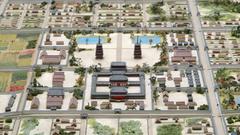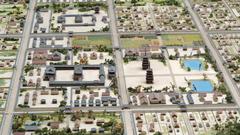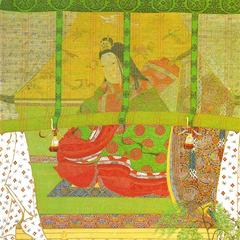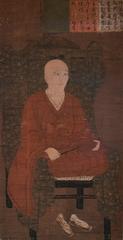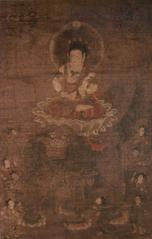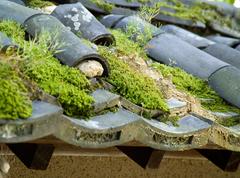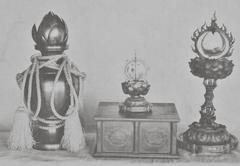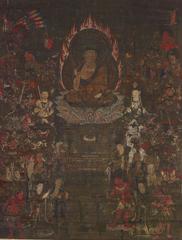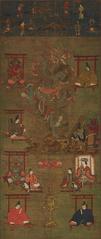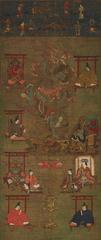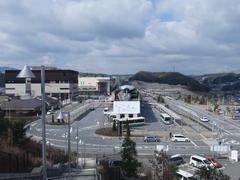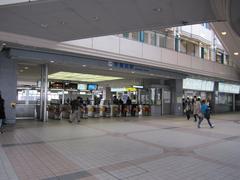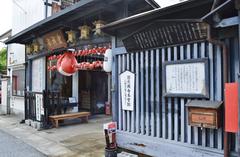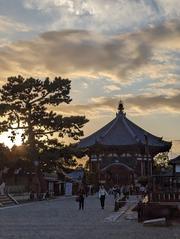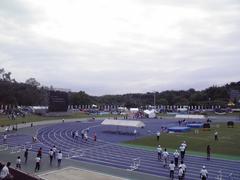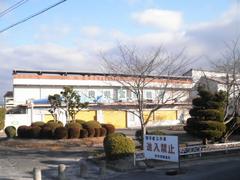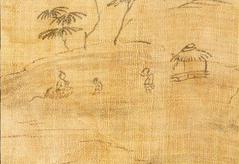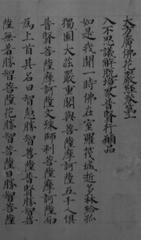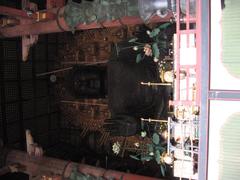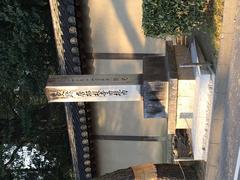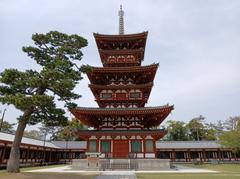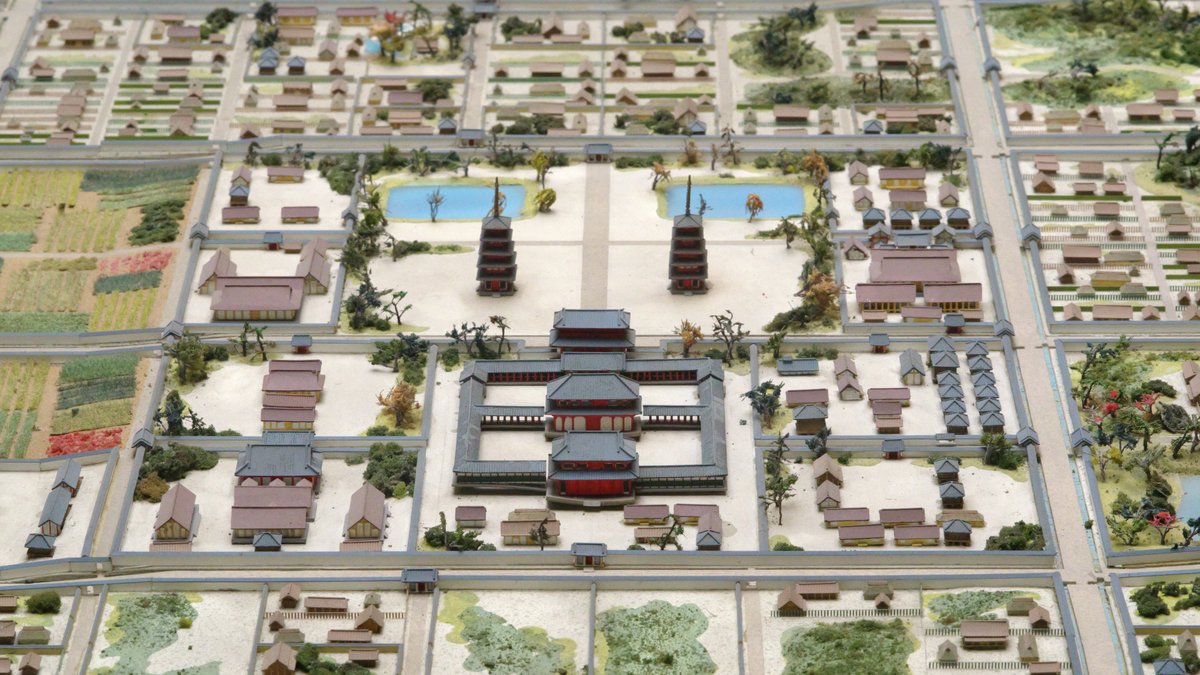
Saidai-ji Nara: Visiting Hours, Tickets, and Historical Sites Guide
Date: 14/06/2025
Introduction
Saidai-ji Temple, nestled in the heart of Nara, stands as a testament to Japan’s enduring Buddhist heritage and imperial history. Established in 765 CE by Empress Shōtoku, this “Great Western Temple” was created to complement the more famous Tōdai-ji, symbolizing the symbiotic relationship between Buddhism and imperial power during the Nara period. Over the centuries, Saidai-ji has played a vital role in religious, political, and cultural developments, surviving periods of decline and flourishing through major restorations. Today, its serene grounds, Kamakura-period statues, and vibrant living traditions make it an essential destination for anyone interested in Japan’s spiritual and historical legacy.
This comprehensive guide details Saidai-ji’s history, visiting hours, ticketing, access, key attractions, annual events, and practical tips to help you make the most of your visit.
For up-to-date details and official resources, consult the Official Saidai-ji Website and the Nara Tourism Official Site.
Table of Contents
- Introduction
- Historical Overview
- Visiting Information
- Key Attractions and Cultural Heritage
- Annual Events and Living Traditions
- Practical Tips for Visitors
- Frequently Asked Questions (FAQ)
- Conclusion
- References
Historical Overview
Founding and Early Imperial Patronage
Saidai-ji was founded in 765 CE during the Nara period by Empress Shōtoku. Designed as the “Great Western Temple” to balance Tōdai-ji (“Great Eastern Temple”), it was one of the “Seven Great Temples of Nanto” and a symbol of the imperial strategy to consolidate power through Buddhism (2ponderful.com). At its peak, the complex boasted more than a hundred buildings and twin five-story pagodas, serving as a major center for Buddhist learning and ritual.
Decline and Revival
After the capital moved to Heian-kyō (Kyoto), Saidai-ji suffered decline, losing many buildings to fire and falling under the influence of rival temples. Its fortunes revived in the Kamakura period, particularly under the monk Eison (1201–1290), who established the Shingon Risshū sect and restored Saidai-ji as a center of esoteric practice (Nara Prefecture). Edo-period reconstructions, especially the main hall (hondō), helped preserve its historical and architectural significance.
Artistic and Sectarian Legacy
Saidai-ji is notable for its Kamakura-period statues, including the principal image of Shakyamuni Buddha (created in 1249), and its role as the head temple of the Shingon Risshū sect. Its architectural features, such as the yosemune-zukuri style of the main hall and the Shitendō hall enshrining the Four Heavenly Kings, reflect centuries of religious and artistic patronage (2ponderful.com).
Visiting Information
Hours and Tickets
- Temple Grounds: Open daily from 8:30 AM to 4:30 PM.
- Main Hall & Shio-do Hall: 8:30 AM – 4:30 PM
- Aizen-do Hall & Treasure House (Juhokan): 8:30 AM – 5:30 PM (June 1st–September 30th)
- Admission Fees:
- Adults: 800 yen
- Junior High & High School Students: 600 yen
- Elementary School Students: 400 yen
- Treasure House: Additional 300 yen, open only during specific periods (January 15–February 4, April 20–May 10, October 25–November 15)
Entry to the temple grounds is free; tickets are required for access to main halls and the treasure house. Tickets are available for purchase at the general reception (cash only).
Access and Directions
Saidai-ji is conveniently located in Nara City:
- From Kintetsu-Nara Station: Take the Kintetsu Nara Line to Yamato-Saidaiji Station (two stops west); the temple is a 5-minute walk from the station.
- From JR Nara Station: Take a local bus or taxi to Yamato-Saidaiji Station, then walk.
- From Kyoto or Osaka: Direct Kintetsu Line trains connect to Yamato-Saidaiji Station.
Parking is available but limited; public transport is recommended, especially during weekends and festivals (Japan Experience).
Facilities and Accessibility
- Restrooms: Available on site.
- Shops/Cafés: Located near the temple and station.
- Wheelchair Access: Main precincts are accessible, though some historic buildings have steps or uneven surfaces. Assistance is recommended for those with mobility challenges.
- Language: Signage and staff communication are mainly in Japanese; a translation app or phrasebook is helpful.
Nearby Attractions
- Tōdai-ji Temple
- Kōfuku-ji Temple
- Nara Park
- Heijokyu Palace Site Museum
- Sugawara Tenmangu Shrine
Combining a visit to Saidai-ji with these sites enriches your Nara itinerary (Visit Nara).
Key Attractions and Cultural Heritage
Main Hall (Hondō)
- Houses the principal statue of Shakyamuni Buddha, a Kamakura-period masterpiece and Important Cultural Property (Wikipedia).
- Enshrines other significant Buddhist images and relics.
Aizen-do Hall
- Features the rare and fierce Aizen Myo-o statue, displayed seasonally (spring and autumn).
Shio-do Hall
- Contains statues of the Eleven-Headed Kannon and the Four Heavenly Kings.
- Reflects the temple’s historic protective and compassionate roles.
Treasure House (Juhokan)
- Modern facility housing statues from the Heian, Kamakura, and Edo periods, ritual implements, and rare documents.
- Open for special exhibitions at specific times of the year (Japan Experience).
Grounds and Community
- The temple grounds, though smaller than in the past, include serene ponds, gardens, and community spaces, blending history with local life.
Annual Events and Living Traditions
Ochamori Tea Ceremony
- Held annually on the second weekend of April, and also in January and October.
- Participants drink from a giant tea bowl, a tradition initiated by monk Eison.
- Attracts visitors from across Japan and the world (Visit Nara).
Eyo (Naked Festival)
- Takes place in February.
- Men compete for sacred objects for blessings and good fortune, drawing large crowds (JapaneseWiki on Saidai-ji Temple).
Other Events
- Spring and Autumn Great Tea Ceremonies: April and October.
- New Year’s Eve Bell Ringing: A traditional ceremony for good fortune.
- Kannon Fire Festival: January.
- Mantra of Light Rituals: October.
For detailed event schedules, check the official temple website or Nara City Guide.
Practical Tips for Visitors
- Arrive early for a peaceful experience, especially during event periods.
- Photography is allowed on the grounds but restricted inside certain halls—respect all signage.
- Dress modestly and remove shoes where required.
- Carry cash as ticketing and some vendors do not accept cards.
- Visit on weekdays for fewer crowds.
- Bring an umbrella in rainy season (June) and dress in layers during spring and autumn.
- Supervise children and stay on designated paths.
Frequently Asked Questions (FAQ)
Q: What are Saidai-ji’s opening hours?
A: Main halls are open daily from 8:30 AM to 4:30 PM; some halls are open until 5:30 PM during summer.
Q: How much is admission?
A: Adults 800 yen, junior/high school students 600 yen, elementary students 400 yen. Treasure House is an extra 300 yen during specific periods.
Q: Is the temple wheelchair accessible?
A: The main precincts are accessible, but some buildings have steps. Assistance is recommended.
Q: When is the best time to visit?
A: Spring and autumn offer the most pleasant weather and feature cultural events such as the tea ceremony.
Q: Are guided tours available?
A: Occasionally; check with the official website or Nara tourism offices for current offerings.
Q: Can I take photos inside the temple?
A: Generally allowed outdoors, but restricted inside sacred halls. Always follow posted rules.
Conclusion
Saidai-ji Temple is a cornerstone of Nara’s spiritual and cultural heritage, offering a harmonious blend of ancient architecture, living Buddhist practice, and seasonal events. Whether you come for the art, the rituals, or the tranquil atmosphere, Saidai-ji provides a rewarding and authentic experience. Enhance your visit by planning around unique ceremonies like the Ochamori tea ceremony and by exploring the temple’s connections to the broader Nara historical landscape.
For the latest information on hours, tickets, and events, visit the Official Saidai-ji Website and Nara Tourism Official Site.
References
- Official Saidai-ji Website
- Nara Tourism Official Site
- JapaneseWiki on Saidai-ji Temple
- 2ponderful.com
- Japan Experience
- Nara City Guide
- Wikipedia
- Japan Travel
- JP Connection
- Travel Japan Journal
- Weather2Travel - Nara
Note: Visiting hours and ticket prices may change. Always check official sources before your visit.
